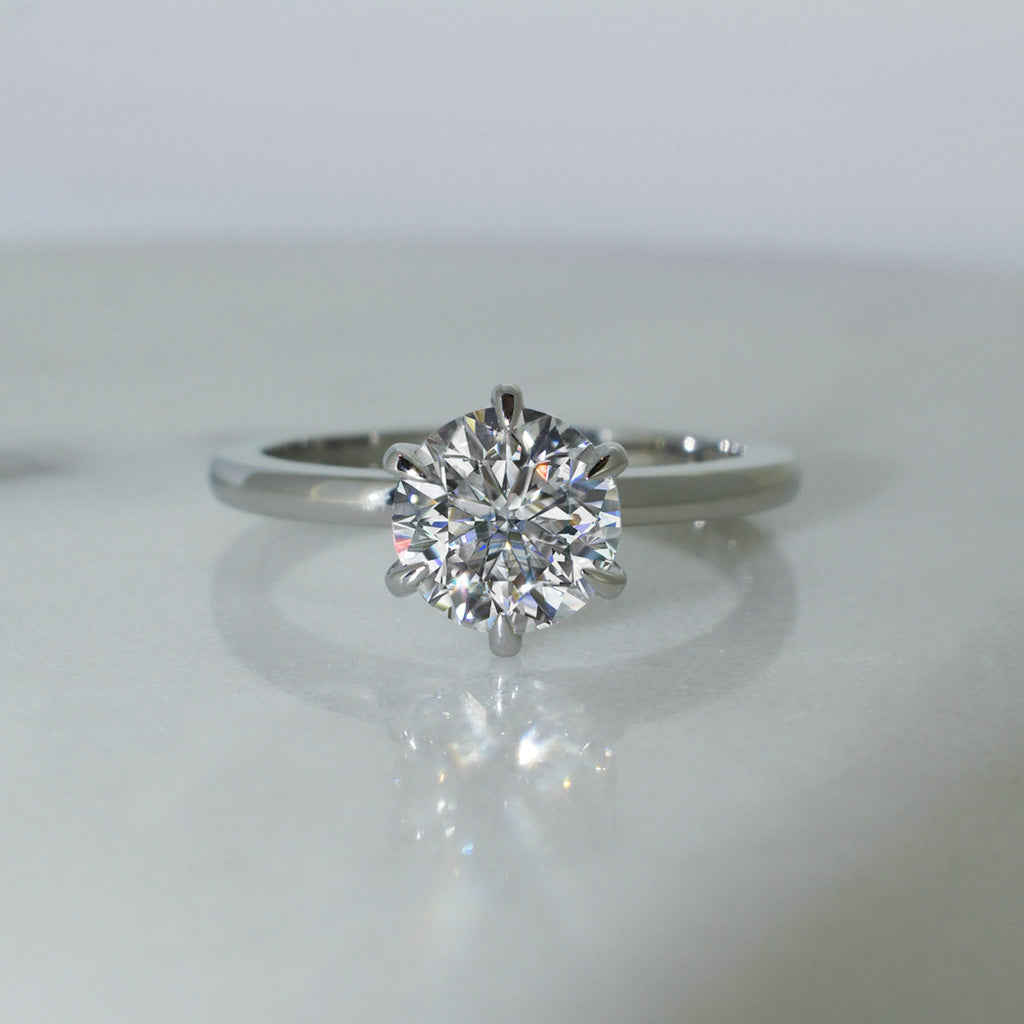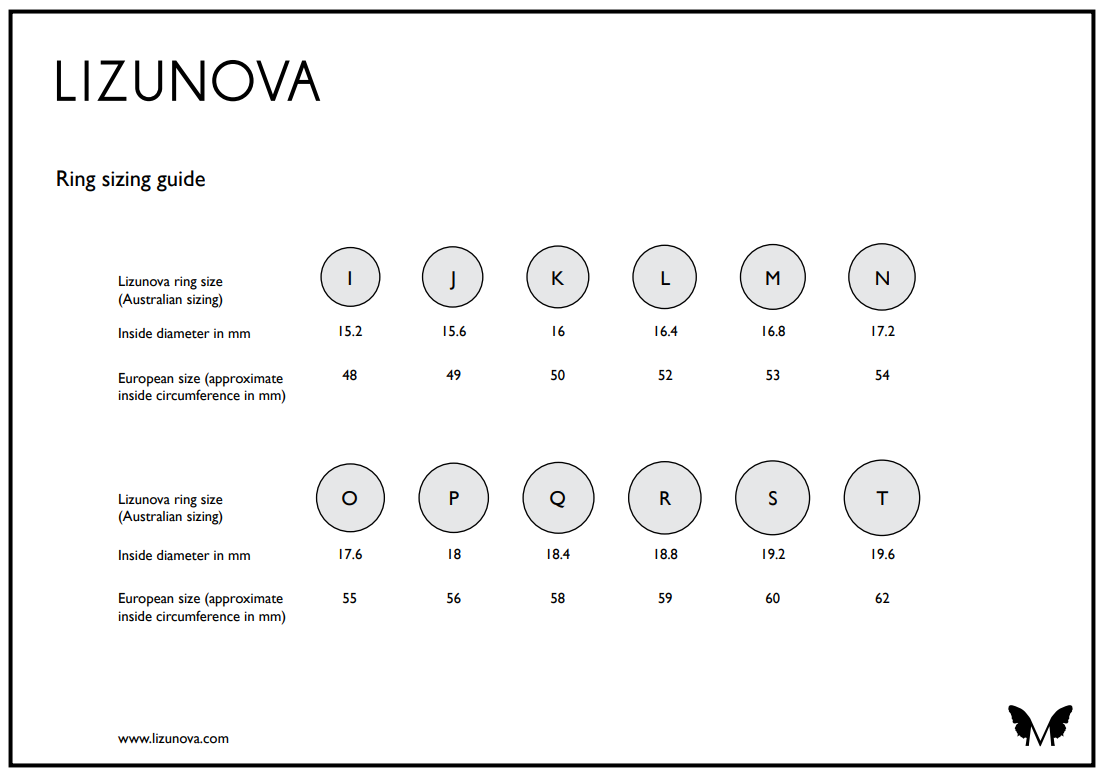Interesting facts beyond the 4Cs
Beyond the 4Cs of white diamonds is a multitude of fascinating facts. Despite the fact that diamonds are made of common carbon, there’s something almost supernatural about them. Just the word ‘diamond’ invokes luxury, desirability and toughness. Yet when we think of the element carbon, we are more likely to think of charcoal: soft, black, opaque, earthy, lightweight. In contrast with carbon in its low pressure form as charcoal or graphite, carbon atoms in diamond are fixed together in a strong, three dimensional network. This leads to unique physical properties: diamond is a clear, extremely hard, often colourless mineral with a very high density.
Diamonds sparkle and have internal “fire” because of their very high refractive index. This means light is “caught” inside the crystal and re-reflected off the internal surfaces. Faces and facets made by gem cutters accentuate this property.
Diamond is the hardest known substance, the greatest conductor of heat, has the highest melting point of any substance (4090°C or 7362°F), and the highest refractive index of any natural mineral. Diamond measures 10 on the Mohs hardness scale, and is approximately 4 times harder than corundum (sapphire and ruby), which is 9 on the Mohs scale.
Formation of diamonds
Diamonds form deep within the Earth under extreme heat and pressure.
Although diamonds have been prized as valuable gems for a long time, until the early 1700s virtually all traded diamonds came from river gravels (known as “alluvial deposits”) in India. Then in the early 18th century diamonds were discovered in Brazil, and from 1866 onwards were mined in South Africa. It was in this country that diamonds' major, violently erupted, volcanic source rock known as “kimberlite” was identified for the first time.
This recognition fundamentally changed the diamond exploration and mining industry, and quickly led to vastly increased production and to the high demand from the modern jewellery industry. Supply of diamonds to the market has long been tightly controlled by a small number of major producers – examples include De Beers (South Africa-Botswana), Al Rosa (Russia), Rio Tinto (Argyle Mine Australia and Canadian mines), Lucara Diamond Corporation (Karowe Mine, Botswana), and the Diavik kimberlite pipe in northern Canada.
Diamond colour
Most diamonds are brown or yellow in colour. The jewellery industry has favoured colourless diamonds (commonly referred to as white diamonds) or those that have a colour so subtle that it is difficult to notice. Diamonds in vivid natural hues of red, orange, green, blue, pink, purple, violet or yellow form a group of Fancy Colour diamonds. They are extremely rare and valuable.
Durability
Diamond is the hardest-known mineral, measuring 10 on the Mohs hardness scale. However, the hardness of diamond is directional. It is hardest parallel to its octahedral planes and softest parallel to its cubic planes.
The value of diamonds
Unlike other mined commodities such as copper, gold, oil or coal, diamond has no spot market. Its value is variable and highly subjective, assessed using the 4Cs system: colour, clarity, cut and carat (5 carat = 1 gram). Per carat, uncut diamond values typically vary from around $US10 to $US3,000. Very large (sometimes very historical) gem-quality diamonds however may command price orders of magnitude beyond this. Until 1950s, there was no agreed-upon standard by which diamonds could be judged. GIA (Gemological Institute of America) created the first, and now globally accepted 4Cs standard for describing diamonds.
Clues about diamond origins
Many diamonds contain inclusions of other minerals, which are captured samples from the deep Earth rocks in which the diamond grew. These provide important information for geologists. For example, inclusions of the minerals olivine, pyroxene and garnet tell us their host diamonds grew at depths between about 120 and 300km, in a layer of the Earth known as the sub-continental lithospheric mantle.
This layer is part of the Earth’s continental tectonic plates, and lies below the oldest regions of Earth’s continental crust known as “cratons”. Cratons are up to 4 billion years old – examples include the Australian Pilbara, the South African Kaapvaal, the Canadian Slave and the Russian Siberian craton.
Blue diamonds deep, deep down
Although the sub-continental lithospheric mantle is the most common source of diamonds, some come from much deeper layers in the Earth. These are called sub-lithospheric diamonds, and identified by mineral inclusions consistent with being exposed to much higher pressures found at depths of more than 650km.
A recent study looked at a type of rare blue diamond like the Hope Diamond. The researchers consistently detected very high pressure mineral inclusions indicating their diamond hosts grew at depths of at least 660km. These diamonds are blue because of the presence of trace amounts of the element boron.
The question of how boron ended up at great depths in the Earth’s mantle is a fascinating one. Boron is an element that on Earth is highly concentrated in the upper continental crust (less than 20km deep) and in ocean water. Its concentration in deeper mantle rocks is typically extremely low. Boron then must have been re-introduced to the deep layers where the diamonds grew.
This would likely have happened through a process called deep subduction, where the boundary of an oceanic tectonic plate (about 100km thick) fails, and the plate then collapses into the deep Earth’s mantle. This moves boron and other materials from the shallow layers of the Earth down into depths of over 700km. Here the boron is supplied to the growing ultra-high pressure sub-lithospheric diamonds. Kimberlite eruptions then bring the diamonds up towards the surface.
A window into deep Earth
In addition to the boron example above, evidence from other diamond mine sites also supports the idea that Earth elements move from relatively shallow to deeper into the Earth through the process of subduction.
This has been detected by tracking different forms of carbon in diamonds from the South African Cullinan mine, and mineral inclusions in South Australian diamonds.
Deep parts of the Earth still have a physical connection with layers closer to the surface. So yes diamonds are valuable due to being beautiful, hardy and relatively rare – but they also provide a fantastic window into the structure and the history of our Earth.
Diamond sources
Angola, Australia, Botswana, Namibia, Russia, South Africa, Zaire. Major cutting centres of diamonds are in Antwerp, Bombay, New York, Tel Aviv.
Synthetics
Lab-grown or synthetic diamonds are a complete copy of a natural diamond that contain the same crystal lattice structure and chemical formula as a natural diamond.
To form a diamond crystal, the element carbon is placed under high pressure and the temperature of the surface of the Sun. Another way to form a synthetic diamond would be through a chemical vapour deposition where a small seed of a diamond crystal is grown layer by layer in a chamber.
Identification of a natural diamond from a synthetic diamond requires specialised equipment. The nature of inclusions in a natural diamond differs from the types of inclusions found in a synthetic diamond. Not all inclusions are easily visible through the naked eye or by using a loupe.
Lab grown diamonds are inscribed with letters “LG” at the base of the stone.
Imitations
Cubic Zirconia, Moissanite, Swarovski Crystal.
Specifications
Hardness: 10 Mohs
Specific Gravity: 3.417-3.55
Refractive Index: 2.417 -2.419
Crystal Form: Cubic. Diamond crystals occur well shaped as octahedra, cubes, rhombic dodecahedral and macles. Diamond is found in igneous rock formations and alluvial deposits.
Treatments: Annealing, Irradiation, High Pressure, High Temperature (HPHT), laser drilling, fracture filling, coating.
Special Care: None
Durability: Very good
Choosing the right diamond for you
When it comes to choosing a diamond for your engagement ring or a piece of bespoke jewellery, the multitude of factors and nuances can make the process rather overwhelming, as there is a significant emotional and financial cost involved. We are here to make it easy and take away the stress! We will be happy to help you select the right diamond from our extensive local and international networks of ethical suppliers, and deliver not only a stunning ring you will be delighted with, but also the best value for money. Feel free to email us to enquire, or book a complimentary bespoke diamond engagement ring appointment with us.
Image and ring: lizunova.com



